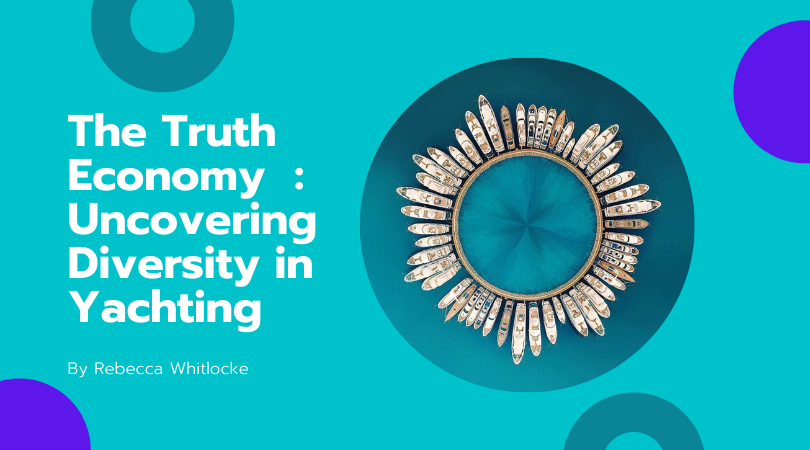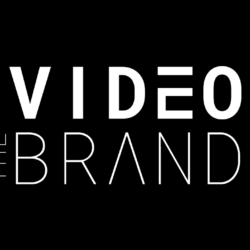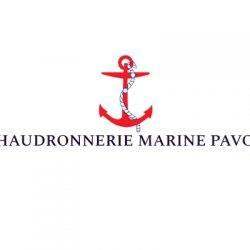Written by Rebecca Whitlocke
The superyacht industry has been paying closer attention to diversity and inclusion, with a focus on equality and creating a more sustainable industry. We see roles such as “Chief Diversity Officer” or “Diversity and Inclusion Manager” in education, healthcare, luxury retail, private aviation or sport, yet few articles have reported about navigating the barriers and successes of building diversity and inclusion strategies into yachting companies.
Diversity includes but isn’t limited to age, disability, gender, race, religion or faith, sexual orientation, pregnancy and parental considerations, marriage and civil partnership or social status. Inclusivity is ensuring your employees feel accepted, valued and at ease to share their ideas and perspectives. For present purposes, diversity is the ‘what’ and inclusion is the ‘how’.

Corporate benefits of diversity and inclusion strategies include improved workplace culture, a wider talent pool and social cohesion that facilitates better communication, creativity and innovation.
In 2020, the World Federation of Advertisers (WFA) published a diversity and inclusion guide for marketers, based on a study conducted by Ipsos who are the world’s third-largest market research company operating in 90 markets. The study showed that: “72% of respondents felt most advertising does not reflect the world around them, while 63% claimed they do not see themselves represented in most advertising.”
Shifts in global sentiment will leave a mark on brand longevity and customer engagement. Isn’t it high time to uncover diversity and inclusion in the yachting industry and have honest discussions about something that impacts all of us?
Age & Perspective
Within the ILO Maritime Labour Convention 2006, there are fundamental principles which underline age, such as minimum working age and guidelines to eliminate age discrimination. Even so, a survey by the Professional Yachting Association (PYA) revealed that crew can encounter age bias during the recruitment process. This particularly limits employment opportunities for those entering the industry aged 50 and over.
Does the superyacht industry demonstrate age bias? I spoke to a number of yachting professionals who were frustrated their career journey reflected age-biased assumptions. David – who wanted to remain anonymous – told me, “I feel the superyacht industry overlooks excellent employees because they may not have joined via a traditional career path. I’m over 40, my background is in the Merchant Navy and there’s definitely a perception that I’m set in my ways, or I’m not as energetic as younger crew or as tech savvy.”
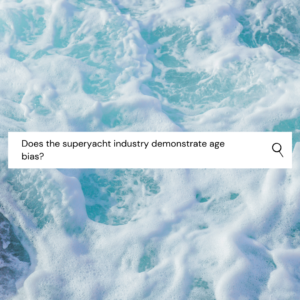
If there’s demand for loyal and highly-skilled employees the better individuals are represented and understood, the better they feel treated. Alongside this, there are traits that are valued in the niche yachting sector such as leadership, resilience and problem-solving – often attributes that come from years of experience. To eliminate potential age discrimination for both young and old, we need to get feedback to understand how different groups experience the yachting industry.
Bernard Vivegnis who has a maritime career that has spanned 5 oceans and 80 countries on various vessels, is a Master Mariner unlimited, Class Surveyor and Lead Auditor. He says, “We have a seasonal crew of 25, of which 18 are full-time employees. With our full-time crew, the average age is 42 years. The permanent crew counts 9 nationalities, with two more if we count the temps. I started in commercial shipping; while I was at the academy my girlfriend was a student Marine Radio Officer. A good proportion of those were women already (1980). The first female student for deck began school just one year after me and went all the way to be a Gas Tanker Captain in the nineties, so did many others. In the culture I come from, and later in shore positions too, gender diversity is natural and always based on merit only. Petra, our Hotel Manager, who is also my partner since 2013, has been in contact with boats all her life. Nevertheless, she only started working as crew on yachts aged 55. So, you can easily see how we find ageism more of an issue than gender.”
Gender Diversity In Yachting
Gender is one of the most visible forms of diversity and at the core of many diversity policies in the superyacht industry. We have seen big improvements in media coverage in the industry regarding gender equality, however, not-so-glowing reports still circulate from yacht crew. A female candidate who seemed ideal based on qualifications was directly told she was “too masculine to be a stewardess”; a 23-year-old told me he was advised face-to-face by an Antibes crew agent that he was “too camp to be a deckhand.”
Everyone that I interviewed agreed there should be zero tolerance of bullying, harassment or violence in the yachting industry, including sexual harassment or cyberbullying. Alongside this, there must be solid enforcement and follow-up by management and reporting bodies.
A recent superyacht industry publication accentuated that women represented less than 15% of expert sources quoted in the report, or shown on the cover. The outcome resulted in a flood of online comments which ranged from Twitter rants to in-depth discussion about gender parity in management positions in the superyacht sector.
Marcela de Kern Royer (photo below; credit Blueiprod), Owner of Onboard consulting in Monaco and currently developing the Genoa Superyacht Hub, shared her viewpoint. “I was 19 when I started in the industry and my biggest challenge was people not taking me seriously because I was a young woman. I was given “career advice” from top leaders saying ‘You’re too ambitious for this industry, women only work in admin or support roles, you have an education in finance so you better stick to that.’ I worked with industry leaders for The Superyacht Industry Book, and that was thanks to my relationships and the professional credibility, respect and reputation I have built over the past 12 years. I believe this is regardless of my gender, to be honest. Once they realise that you actually know what you are talking about, they treat you as one of them, but I do feel like I had to work harder – firstly to prove myself and then do my job.”

Marcela de Kern Royer (Photo: Blueiprod)
By law, many countries have a gender quota where a minimum percentage of board members must be female, however women in leadership positions isn’t a dominant force in yachting. Diversity quotas are sometimes badly perceived, but if you remove them what are the alternatives you see in the superyacht sector? It’s clear that yachting CEOs rely greatly on female management and women’s groups to expand gender dialogue in yachting.
I noticed a recent announcement for the board of directors for a yacht brokers association; all 11 elected board members were male. Was there input from the nominating committee to actively seek out and nominate female directors? It’s not just yachting that reflects corporate talent pipelines – white males held 85.8% of the Fortune 500 CEO positions in 2020.
Lea Tintaud who works as a Yacht Charter Broker and Helicopter Consultant feels that the industry can be tough, but there’s no place for excuses. “Working on yachts, I understood very quickly how pyramidal management works in general, and if I worked hard and understood how to navigate this with respect and a smart approach, I could very well have the same credit as a man. When I entered the brokerage world, my inexperience in the administrative side of the business made me very humble and I did not feel discriminated at all. On the contrary, there was no limit to learning and the whole team wanted me to succeed and understand the business on a global scale.”
Lea also founded Helichix, a community to celebrate women in the helicopter industry. “I wanted to see if there were other female pilots out there and started reposting their achievements to motivate me and also show other women this career path was not solely for men. It really is a tough journey when you decide to go pro. I admire the financial sacrifice, commitment and skills and I wished to celebrate that.”
Accurate numbers of females working across the superyacht sector are hard to obtain; I was surprised because I assumed that for us to acknowledge gender parity we need to inspect detailed data and its distribution. The International Maritime Organization (IMO) and the Women’s International Shipping & Trading Association (WISTA International) are conducting a Women in Maritime survey until 30 June 2021. The survey is part of a study that will be conducted every three years to support the implementation of the United Nations Sustainable Development Goals. The data collected will assist in creating programs and policies that will increase the participation of women in maritime. Questions aim to compare geographic regions, 35 maritime-related activities and management scales; you can participate here: https://www.research.net/r/IndustryIMOWISTA
Generally, diversity statistics are difficult to find for the superyacht industry. Equality Check is a platform for crowdsourced reviews about perceived workplace equality and culture, though it doesn’t deep dive into yachting-specific policies, organisational procedures or geographic data. Sea of the Sea’s Annual Report 2021 reported on feedback from 24 of their Pledge Signatories representing crew placement, management, shipyards, training providers and yacht services. It was interesting to see that the results showed that just 33.3% of Pledge Signatories were currently collecting employee or customer data for D&I monitoring purposes.
As with many other industries, data tools and frameworks are lacking. We should be identifying the roles and sectors that employees work in, and issues such as salaries, health and well-being alongside concerns such as parental or sick leave entitlement. Nevertheless, these are all good starting points for establishing clarity and a baseline for inclusive workplaces. Hopefully we can vastly increase the sample pool industry-wide, and see a bigger uptake in the number of categories and companies of all sizes and structure contributing to results.
LGBT+ Individuals In Yachting
There are professionals who are lesbian, gay, transsexual or transgender in the yachting sector, though it remains one of the taboo subjects that is rarely discussed. I spoke to four individuals of the LGBT+ yachting community about their experiences. They told me they’re on the receiving end of overt or covert discrimination hearing insensitive jokes or bigoted remarks at least occasionally. One told me he “hates the use of acronyms because it’s not a true reflection of who I am. I don’t want to become the token gay guy.”
The reality is LGBT+employees are employed in the industry, but many are told to subdue their personalities while at work. Anti-discrimination legislation does exist in maritime, yet crew members and employees are not always aware of the provisions of anti-discrimination laws or where to find assistance. Evidence suggests that people are hesitant to report discrimination for fear of creating a hostile work environment, losing their job or the cost of legal processes.
The Pride in Maritime Network was launched in 2020 as part of the Diversity in Maritime programme from Maritime UK. It aims to educate and enable individuals and companies to embrace, empower and support the LGBT+ community which is encouraging to see. Franco who works as a Chief Engineer in Barcelona says networks such as Pride in Maritime are important support groups. “To be honest, most crew don’t care about my sexual orientation. My experience is that younger crew in particular have less stigma about it. My job is to focus on the engine room – just as other crew members are expected to focus on their jobs. I’m thankful there are support networks with like-minded yachting professionals.”
Last month, the Principality of Monaco announced they are a 2021 featured destination of the International LGBTQ+ Travel Association (IGLTA). “We are thrilled that Monaco has become an IGLTA Featured Destination after having been a member since 2015,” said the Monaco Government Tourist and Convention Authority General Manager Guy Antognelli. “Monaco is a cosmopolitan nation with 139 nationalities that help make the world’s second smallest country culturally diverse, inclusive, and welcoming.”
The relevance to the superyacht industry is important. Yachting is the fourth largest sector of the Principality and a hub for over 300 companies connected to maritime activity and of course, it’s synonymous with yachting being the home of Cluster Yachting Monaco, Monaco Yacht Show and Yacht Club de Monaco. Many of the industry’s best-performing sales and charter brokerages are based there, yachting companies align with Monaco’s major events and the International University of Monaco offers the Yachting Track, a specialised field of study of the Msc in Luxury Management proving the impact of an ever-evolving market is always present.
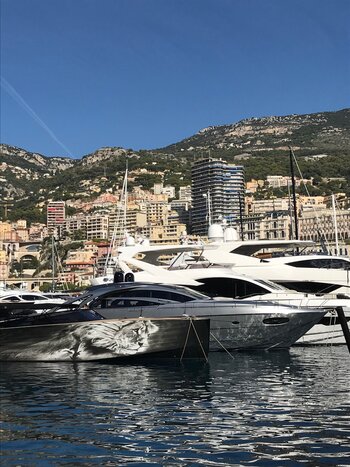
Destination tourism has amplified marketing efforts, as well there are plenty of global sailing companies advertising LGBT+ friendly charters. Yet, in my research for this article neither myself or numerous sources I spoke to could give examples of LGBT+friendly representation in superyacht advertising or imagery. I believe it’s non-existent but I’m happy to be proved wrong. It’s a contradiction for an industry that publicly extols the virtue of respecting individuality when the reality differs.
According to a recent Facebook report of 1200 consumers, 71% of respondents expect brands to promote diversity and inclusion in their online advertising and 59% said they prefer to buy from brands that “stand for diversity and inclusion” in their ads. Diversity and inclusion are not the same. Inclusion is about authenticity, empathy and equality, and is more focused on the policies and procedures a yachting company implements in the workplace. There’s never been a better time for advocates to honour commitments and be 100% vocal for these causes.
Disability & Work
In OECD countries, nearly 15% of the working-age population reports having a disability or long-lasting heath problem that limits their activities in daily life (OECD, Sept 2020). The United Nations Convention on the Rights of Persons, Sustainable Development Goals and Disability Inclusion Strategy aim to empower persons with disabilities, transform their societal position, and ensure access to training, new experiences and work opportunities.
I never see any inclusivity articles discussing how we can try to reduce or remove the barriers that prevent persons with disabilities from participating in the superyacht industry, whether on board or employed in shore-based jobs. Disability should be understood in terms of social and environmental factors and not just an individual’s mental, intellectual, physical or sensory condition. Disability can also be ‘invisible’, so many people struggle to enter the labour market even if they can or wish to work.
Accessibility is widely discussed in aviation, education, healthcare, hospitality and retail. Workplace layout, communications and product design can help or hinder accessibility. Considerations include office set up such as having height-adjustable desks or fire alarms with vibrating pads or flashing lights, or physical layout adjustments such as width and accessibility for doorways, bathrooms, hand rails, stairwells, storage zones and passerelles that make movement less restrictive.
Some discussion points include marina accessibility, medical and occupational safety considerations for a career in the superyacht industry such as deficiencies in colour vision, persons with hearing impairments, epilepsy, insulin-dependent employees and physical mobility issues in the event of an emergency at sea. Thought should be placed on risk assessments, capability dealing with extreme weather or long-distances at sea where medical intervention may not be available urgently.
The superyacht sector should be mindful of new environments or technologies that may not be accessible or inclusive to all. In 2020, a number of yachting companies signed diversity and inclusion pledges; in 2021 some of those same companies are broadcasting on Clubhouse, which is an invite-only audio-only platform that excludes all Android users as well as employees with hearing impairments. We shouldn’t let the ‘Fear Of Missing Out’ lead companies to misstep away from their core values in choosing where they distribute their messaging.

I’d like to see more community involvement from the yachting sector with charities and causes that align persons with disabilities with nautical activities. Examples include adaptive sailing programmes and Wetwheels, a wheelchair-accessible power boat based in the UK which came to fruition through the efforts of disabled yachtsman Geoff Holt, MBE and various marine industry companies including Raymarine, Suzuki Marine and Cheetah Marine.
The Impact Of Yachting Media On Diversity Issues
I remember my first personal experience of racism when I was a child, lining up for a school cross country run and a kid from a competing school made a teasing remark about my ethnicity being a deciding factor in winning or losing. As a shy child, it was confronting. Not because it was verbalised, but because my parents had instilled in me that a skinny brown girl like me had as much right to stand at the starting line; I had the same chance to win or lose as anyone else. Partially fueled by athletic ability and partially fueled by determination to prove the kid wrong, my little legs ran as fast as I could. I won the race.
All this came flooding back to me a few months ago. My youngest son was doing a school craft project and looking for silhouettes of people to glue onto paper. Thumbing through one of my yachting magazines for a few minutes he suddenly stopped, turned to me and asked, “Mama, where are all the brown people?”
An innocent comment from a 5-year-old child who attends a multinational kindergarten and has extended family on 5 continents. In a day of childish observations, this one caught my attention. He was 100% right and I couldn’t give him an answer. Where exactly were all the brown people??
We sat together, turning the pages of 7 international yachting publications; dominantly showing loved-up white couples frolicking on superyachts and yachting imagery of nuclear families of a white husband, wife, son and daughter. Aside from one yachting magazine that geographically represented local ethnicities, there were only 34 pages out of 851 pages that showed any diversity with their imagery.

The impact of yachting media plays a big part in change regarding diversity in the superyacht sector.
I won’t name the publication here, but one magazine went to print with just 2 pages out of 136 pages representing diversity. TWO PAGES in a well-established publication that announced they champion diversity. It was confronting to see single-digit representation across these pages because the reality was clear – the lack of diversity wasn’t solely visible in print magazines, but rampant across yachting websites, brochures and digital marketing.
I interviewed yacht brokers, yacht designers, company owners and crew members of different nationalities. Many yacht crew I spoke to from North America to the Adriatic, Africa, Asia, Caribbean and the Mediterranean said yachts and recruiters vouch they employ the best candidate to do the job. Still, the reality is that owner’s preferences, management companies and crew agents can show bias based on ethnicity, gender, nationality or physical appearance of the person applying for whatever job is recruiting. You only need to read job postings to see the list of desired requirements extends far past academia, experience, minimum industry certifications or physical aptitude to do the job.
Josipa Lozo (left) works as a Chief Stewardess and shared her experience, “At a major yacht show, I worked on a boat that was about to be sold. One of the brokers said, and I quote: ‘Don’t know how you managed to escape Croatia to get on yachts. Isn’t there a war still going on?’ It still rings in my head. I believe they would never say something like that to anyone today. That is what I call progress, but there is still more to do. I know this sounds clichéd, but being kind is essential to make changes. Maybe then job posts would never mention what passport is relevant.”

Chief Stewardess Josipa Lozo
An African-based deckhand told me, “I feel embarrassed to say it but I ‘tone down’ my identity in the superyacht world to fit in. If I comment publicly on something, I’m viewed as playing the race card. I feel that many people doubt my ability based on my ethnic-sounding name, skin colour and where I’m from, rather than my character and skillset to get the job done.”
Some frank feedback proving that diversity issues still sit on the surface. Is it really OK to expect crew or shoreside professionals to drop their identities when they work in yachting? Some interviewees said they didn’t feel people were prepared to listen to feedback or honest critique. Communication, engagement and inclusion are interlinked with our job and we need to monitor the implications of blocking this on well-being and mental health.
As well, data-driven marketing means we make strategic decisions based on customer interests, behaviour and insights. Yacht marketers assess this data constantly! It helps us understand certain demographics for targeted campaigns, however it means we fail to observe purchasing motivations and emotional viewpoints of yachting brands.
Even with defined strategies, putting a foot wrong with cross-border marketing and data collection can be challenging for yachting brands. Gaps can arise from cultural and societal expectations of women resulting in varying supply dynamics in different global regions that need to be considered, regional barriers such as collecting ethnic or racial data in Europe in accordance with the EU Data Protection Directive (Directive 95/46/EC), or being sensitive with data collection related to indigenous identity.
“I think yachting is international, I do see a lot of nationalities being represented,” adds Marcela de Kern Royer. “Regarding this, I do agree that some nationalities are dominating, however in terms of advertising and marketing I tend to see more and more Asian-based nationalities which is reflective of this upcoming market.”
Planet Earth is intertwined with people, purpose – and of course, performance and prosperity – yet there’s a clear imbalance in the yachting industry. Globalisation has brought customers closer to nautical brands than ever before, yet we still aren’t always proactive in reaching customers who usually aren’t part of our brand journey.
Where will the superyacht industry stand in the future unless we evolve? There seems to be a feeling that the next generation of employees and clientele has been ignored with advertising and marketing campaigns. And with that is their combined spending power – something that the industry won’t be able to ignore for too long. We need to prioritise people and processes, because being relevant across audiences is absolutely critical for the industry.
Seventy percent of our coastlines are in the developing world, yet media representation to reflect the faces from these regions is disproportional. Why are we not challenging the status quo and changing this? The burgeoning importance of our marine environment and how relatable yachting appears to different nationalities is something we should have already rebalanced.
Eliminating Consensus Bias
The superyacht sector has always been strong at publicly discussing build, design, crewing or operational efficiency, yet at the mere hint of diversity and inclusion there’s an exodus and the steps to progress fall on one or two players who act as pacesetters. If long-term commitments are going to play a role in changing yachting culture, there has to be action from top management within the industry or we’ll keep seeing gaps between the education / training stage and industry opportunities.
We must encourage debate to break consensus bias and include diverse employees in the discussions and decision-making process, or we’ll fail to get ideas or perspectives that we hadn’t thought of before. A private roundtable filled with people with similar profiles is an echo chamber. People need to feel that there’s sincerity in the efforts to represent them or they won’t speak out. Diversity shouldn’t be focused on favoritism or tokenism, but promoting equal opportunities.
Look online for the flood of yachting articles that roll out on International Women’s Day and you can understand the visual storybook of achievement and what it means to be in the spotlight for a specific day (or month). The reality is ALL types of people design, build, repair, own, sell, service, charter and crew yachts and are corporate leaders, or are passionate yachting business owners, or fighting for awareness about ocean conservation and marine ecosystems.

I support diversity initiatives, but we need to stop harvesting a stream of yachting companies with a stop-gap mindset. Diversity and inclusion shouldn’t be an ode to opportunistic marketing or viewed as a quick fix measure that can be absorbed into existing company culture. Actions need to be supported from the top down to the ground level in a company.
I’ll use the analogy of writing your name in wet cement and hoping the concrete pourer leaves a safety cone out so a kid doesn’t ride through it with their bike and mess it up with tyre tracks. Your signature will erode with time; so you need a fresh layer of cement to start again and maintain a consistent mark. Specifically for yachting, that ‘fresh cement’ comes via buy-in from senior management and structured strategies with in-depth quantitative measures and ongoing assessment.
Let’s do what’s best for the durability of yachting, not simply what’s considered the done thing, because we can’t cultivate anything if it’s left gathering tumbleweeds in the human resources or public relations departments. We need to stop defining movement as definitive progress, because it’s fueling corporate hypocrisy – there’s plenty of scope to immediately improve current business practices in the superyacht sector from recruitment to taking ownership for the use of imagery across brand marketing and messaging.
Yachting Initiatives That Are Driving Diversity Change
Nikos Karayiannopoulos who is a Partner at Gloss Yachts believes that we need to broaden our reach to include people that are keen to learn about the industry and bring new ideas. “We should raise awareness on aspects that obstruct the maritime space to flourish and cultivate an open culture to propel yachting to a sustainable future. By acknowledging and embracing different cultures in different fields, we value diversity and inclusiveness and allow data and knowledge to drive and transform our industry.”
What can be done to drive change?
1) The first step is ownership and acknowledging we can do better.
2) Step two is building awareness and education via actions and solutions specifically for the yachting sector. Suggestions include:
? Ensuring that national laws, regulations, policies and other documentation doesn’t use biased language so as to encourage equal opportunities.
?Auditing your business processes and implementing written guidelines or a policy of nondiscrimination.
? Having input from stakeholders, investors, CEO’s and higher management toward solutions. They are uniquely placed to help advance diversity in the superyacht sector as a societal issue, not just a box-ticking exercise. Leaders and stakeholders need to walk the walk and reinforce values.
?Hosting diversity discussions with all genders. If you’re going to roll out an initiative focused on diversity, then everyone belongs in the decision-making process and can be accountable for supporting progress.
?Skills training, mentorships and internships for less advantaged people giving them access to resources they wouldn’t have otherwise. We need diversity with mentors too.
?Involve a diverse team of people in the recruitment process for employees. If only yachting recruitment was as easy as the graphic below!
?Having specific quantitative reporting for diversity and inclusion guidelines with monitoring for training, recruitment, salaries, career paths and job retention.
?Ensure pay equity and benefits for the same positions in a company.
?Researching opportunities where you can work with diverse business partners, vendors and communities.
?For yachting forums, conferences and workshops, we should provide a diverse range of speakers and panel guests. We can definitely improve in this area!
?Connecting yachting brands with ethnicity in maritime groups, females in leadership positions, the LGBT+ community, and other groups not typically targeted by yachting advertising and marketing campaigns.
?Addressing the imbalance in yachting media. I’ve had feedback that companies struggle to find industry-specific photos or videos showing diversity. I analysed 75 yachting websites for this article and if you think there’s progress being made, you’re incorrect. Only 6% of websites showed diversity with their human-centric imagery, including hero images on their home page, their blog/news section or product/service pages.Yachting companies need to be accountable and take ownership for their own content assets – please don’t use lack of stock photography as an excuse! We need to foster a commitment to using imagery, models, journalists, editorial and marketing teams, photographers and videographers that contribute to showing diversity on our yachting magazine covers, websites, marketing collateral and across digital media. Superyacht companies, media and marketing agencies need a huge overhaul from selecting the creative team to content creation, production and media distribution.
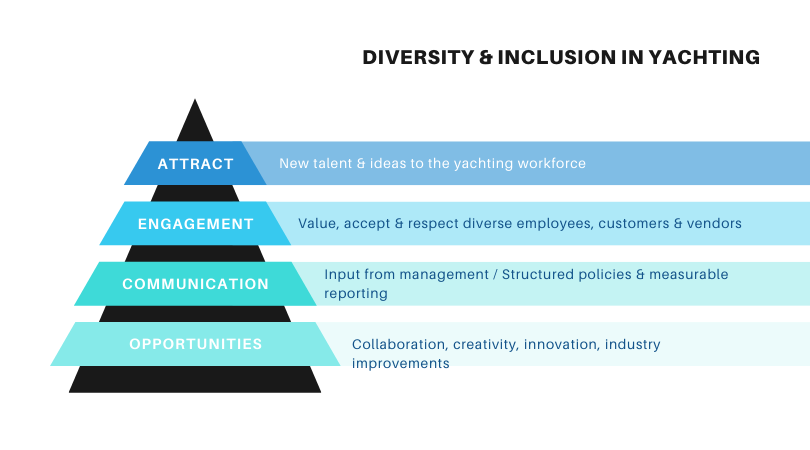
Diversity and inclusion in yachting should consider multiple aspects such as recruitment, buy-in from management and media footprint.
✅ Small ripples make big waves. There’s already many individuals and organisations piloting change. I applaud positive initiatives that prove that support networks rise from barriers; kudos must go to:
Against the Tide Foundation, Association of Women in Yachting, Diversity and Ethnicity in Maritime from Maritime UK, Empowering Ladies Of Yachting (Facebook group), International Maritime Organization (IMO), International Seafarers’ Welfare and Assistance Network (ISWAN), Luxury Hospitality’s training courses that foster positive workplace cultures, Karine Rayson who runs The Crew Coach, Kate Bollanou’s cross-cultural communication advice via Kate Bollanou Coaching and The MemberShip Club, Melanated Mariners, Melanin Yachts, Nautilus International, The Mission to Seafarers, The Royal Yachting Association, She of the Sea, Soca Caribbean Yacht Charters, Superyacht Radio, Superyacht Services Guide’s #LIFEONBOARD initiative where crew send in photos from their daily life, The Sea Women of Melanesia program, YachtDame, YachtFemme and Yachting International Radio.
Rhea Rouw is the Founder of Yachting International Radio, the only broadcast media with regular shows speaking up about diversity within the superyacht industry. Their platform reaches an audience in 100 countries and has covered around 80 interviews focused on diversity, alongside interviews discussing underrepresented topics. You can tune in to ‘Diversity in Yachting’ hosted by Gabriela Barragán on Thursdays, or ‘Uncensored’ hosted by Marièn Sarriera on Tuesdays. Rhea says, “There is a disconnect between most of the industry’s statements and marketing as well as their commitment of resources, and the actual reality of change being made. The struggle isn’t new, the conversation isn’t new, the problem is that corporations talk the talk, but don’t walk the walk. I realised that Yachting International Radio was a pioneer for these conversations; the only way to understand how we can change as a society and an industry is if we listen to the narrative that comes from reality, not perception.”
Global Voices In Yachting
I know that this article will fall into view of some industry professionals and they will read it, roll their eyes and feel hugely uncomfortable; a harsh reality check that their actions don’t mirror their intentions as the proverbial penny drops. In the near future, I predict we’ll see yachting websites, publications and marketing updated as businesses visibly revise their content, alongside announcements from yachting companies stating their ‘commitment to diversity in their advertising and media.’
Seeing the content that the yachting industry creates through my son’s eyes, I recognise that I can do better, personally and professionally. Fifteen years ago, I would have shied away from writing an article such as this – wondering if Editors would place it into the ‘too controversial’ pile and relegate me to the equivalent of the journalistic trash can, or reworking the draft to appease a highly moderated angle. Today, I understand it’s no longer a knife edge to balance awareness. Today, I hit publish!
None of us are perfect, and I’ve learned so much putting hours of research into this article. There’s no way to be likeable to everyone if you want to demonstrate lasting change. I’m still learning to trust that sometimes I have to be brave enough to get booed out of a room, or accept criticism alongside accolades. And I will – but I will do it with integrity and authenticity and one day I’ll show my sons this article and explain how I drafted it and hesitated whether to publish it.
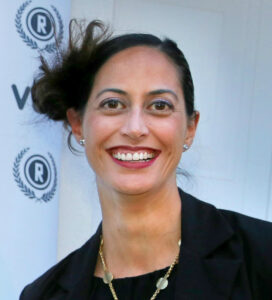
Repeating the same rhetoric over time is the opposite of innovation and we need to ensure diversity and inclusion isn’t an afterthought. I believe the superyacht sector is improving and can be a better place. In terms of employment, the industry has a lot to gain as we reset for the future and discussions continue about internal organisational structure, flexible work conditions and broadening our workforce.
I hope to keep pushing for those stories on behalf of those people who may not otherwise have access to them. We need visual and aural visibility in our internal and external yacht advertising and marketing that represents people from various demographics, socioeconomic backgrounds and geographic regions who can expand our breadth of thinking.
We should already be speaking up for global audiences. Thank you to those people who are making space and igniting these conversations today so the generations to come can burn brighter instead of rising from ashes; I’ve been watching – I see you and I hear you.
Now is our greatest opportunity to act collectively to evolve yachting and engage people by uncovering the layers of what they’re feeling and experiencing, rather than what someone else says they’re thinking or saying. Unless we shine a lens on everyone with sincerity and mutual respect, then sustainable change and future proofing the industry isn’t possible.
✅ If you’ve reached the end of my article – thank you. Please leave me a comment below and share this article to your network – feedback and discussion is welcome!
I would like to say a big thank you to all the interviewees for sharing their perspective.
My article about diversity and inclusion in yachting first appeared on LinkedIn Pulse and the “Diversity in Maritime” LinkedIn page on March 17: https://www.linkedin.com/pulse/truth-economy-uncovering-diversity-yachting-rebecca-whitlocke/
A two-part version is published here on OnboardOnline. Part 1: Diversity and Inclusion in Yachting and Part 2: Diversity and Inclusion in Yachting.
Sources: 30% Club, Balestra, C. and Fleischer, L. (2018), Diversity statistics in the OECD: How do OECD countries collect data on ethnic, racial and indigenous identity?, OECD Publishing, Paris, EU Maritime Women, International Labour Organization, International Maritime Organization, Report on Data Collection in the field of Ethnicity (prepared for the European Commission, relating to EU Members collecting racial or ethnic data per Directive 95/46/EC [1995] OJ L281/31), Regulation (EC) No 1882/2003 of the EU Parliament and of the Council of 29 September 2003 L. 284, She of the Sea Annual Report 2021, Why Women Work, World Federation of Advertisers (WFA).

